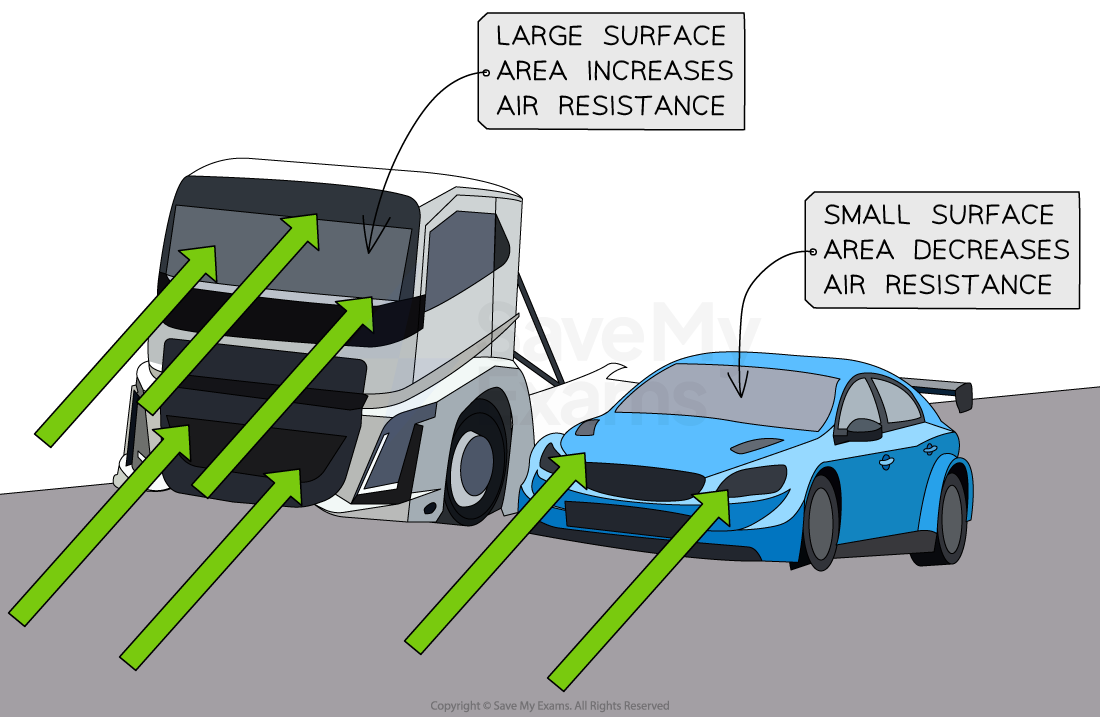Streamlining (Oxford AQA IGCSE Physics): Revision Note
Exam code: 9203
Streamlining
The maximum velocity that an object travelling through a fluid can reach is its terminal velocity
Terminal velocity is reached when the forward driving force (thrust) is equal to the drag forces
Streamlining reduces the drag forces acting on an object, therefore increasing the maximum (terminal) velocity
Air resistance on a truck and a car

In general, elongated, rounded shapes allow an object to pass through a fluid with minimal drag
Racing cars are designed with streamlining features
Air passing over a racing car

Splitter
Directs the airflow on top of the car with minimal drag
Drive planes
Direct the airflow on top and around the sides of the car with minimal drag
Side vents
Redirect air from the wheel wells to reduce turbulence
Side skirts
Direct airflow along the sides of the car with minimal drag
Wing & Spoiler
Directs airflow upwards to create a downward force on the car to increase stability
Sharks have evolved to have streamlined adaptations
Sharks who can swim at faster speeds are better hunters
The most successful hunters are more likely to live long enough to reproduce and pass those adaptations on to their offspring
Adaptations of a shark

Elongated, rounded body
Directs water flow around the body with minimal drag
Pointed nose
Cuts through the water directing water flow around the body with minimal drag
Smooth skin
Reduces friction of the water molecules on the skin
Examiner Tips and Tricks
While you do not need to memorise these features, you may be given a design feature or adaptation in an exam and you must be able to explain how it increases terminal velocity.

Unlock more, it's free!
Did this page help you?